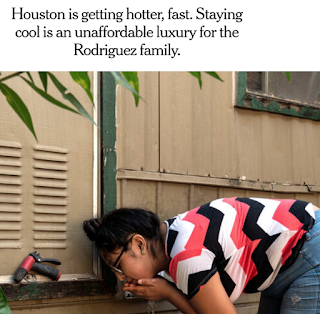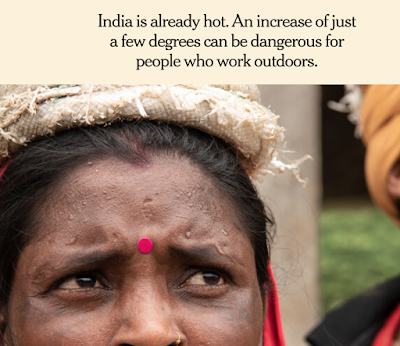It was a record 125 degrees Fahrenheit in Baghdad in July, and 100
degrees above the Arctic Circle this June. Australia shattered its
summer heat records as wildfires, fueled by prolonged drought, turned
the sky fever red.
For 150 years of industrialization, the combustion of coal, oil and gas
has steadily released heat-trapping gases into the atmosphere, driving
up average global temperatures and setting heat records. Nearly
everywhere around the world, heat waves are more frequent and longer lasting than they were 70 years ago.
But a hotter planet does not hurt equally. If you’re poor and
marginalized, you’re likely to be much more vulnerable to extreme heat.
You might be unable to afford an air-conditioner, and you might not even
have electricity when you need it. You may have no choice but to work
outdoors under a sun so blistering that first your knees feel weak and
then delirium sets in. Or the heat might bring a drought so punishing
that, no matter how hard you work under the sun, your corn withers and
your children turn to you in hunger.
 |
| Heatwaves |
It’s not like you can just pack up and leave. So you plant your corn
higher up the mountain. You bathe several times a day if you can afford
the water. You powder your baby to prevent heat rash. You sleep outdoors
when the power goes out, slapping mosquitoes. You sit in front of a fan
by yourself, cursed by the twin dangers of isolation and heat.
Extreme heat is not a future risk. It’s now. It endangers human health, food production and the fate of entire economies.
And it’s worst for those at the bottom of the economic ladder in their
societies. See what it’s like to live with one of the most dangerous and
stealthiest hazards of the modern era.
Photographs by Myrto Papadopoulos in Athens, Ilana Panich-Linsman in Houston, KC Nwakalor in the Niger Delta, Nigeria, Daniele Volpe in Jocotán, Guatemala, Saumya Khandelwal in Lucknow, India, and Juan Arredondo in New York City."

No comments:
Post a Comment